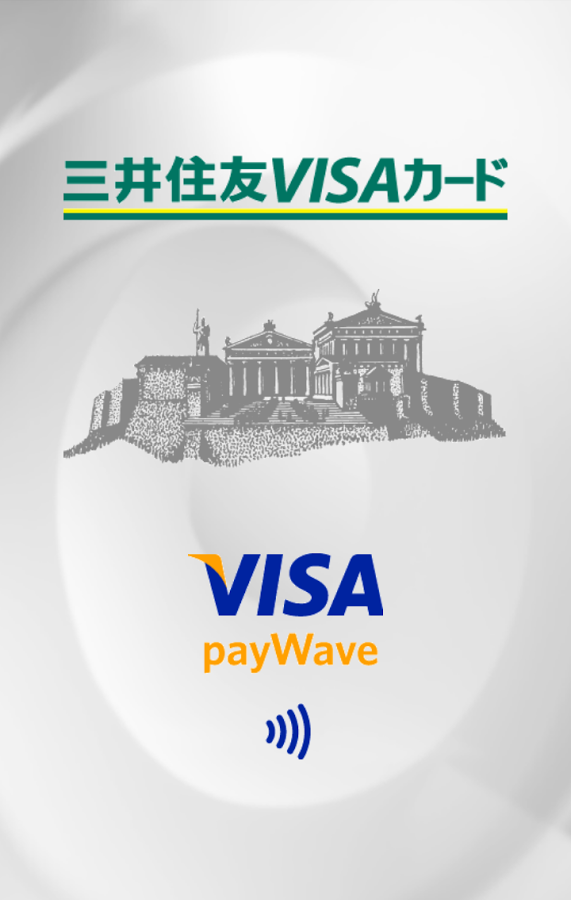 |
| This Verifone terminal does them all |
- a docomo phone (since the iD service, while available for a variety of plastic credit cards, is only currently offered on docomo as of July 2014)
- a Japanese MasterCard that supports PayPass
But what if you have a Visa card? What if you have your phone/carrier isn't docomo? There are options.
Minimum Requirements for any overseas NFC Use
First of all, you will still need the bare hw/sw requirements that were mentioned in more detail in the previous post:
- A docomo/au/Softbank phone that supports NFC types A/B/F (NFC Type F is the same thing as "FeliCa")
- A USIM that supports NFC Type A/B. If you bought your phone recently your phone probably already has one of these and you don't need to talk to your carrier for an upgrade.
- Your NFC R/W P2P needs to be "off" when using payment systems, which expect the NFC to be in client/master mode (the phone is the "client," the Point-of-Sale terminal is the "master")
Bank Provided Apps for Japanese Galapágos Phones
Finally, you will need a bank that supports NFC credit cards through its own app (or one that it partners with). Currently, there are two credit card companies that offer overseas credit card ability: Sumitomo-Mitsui Visa (PayWave) and Orico Visa (PayWave) & MasterCard (PayPass). Orico was the first in Japan to offer Visa's payWave. |
| Sumitomo-Mitsui's Visa PayWave |
 |
| Orico's payWave/PayPass |
These applications can be installed on compatible docomo, au, and Softbank phones. If you have a Orico MasterCard, you can choose to use the Orico app to set it up, or choose the iD app.
Just like the instructions in the previous post, simply possessing the correct card and a working app/phone is not enough; you need to contact your credit card company (either at application or afterwards) and tell them to you wish to use this functionality, and they will send you a one-time use "access code" and password to activate it.
As PayPass and PayWave services are still very new in Japan, it is likely that additional banks and cards will offer this service in the future.
As PayPass and PayWave services are still very new in Japan, it is likely that additional banks and cards will offer this service in the future.
 |
| Visa payWave (& most probably MasterCard payPass; maybe American Express expresspay/Discover zip OK |
Card Compatibility at the POS Terminal
VISA payWave can be used almost anywhere MasterCard PayPass is accepted, especially in the United States. If you see the payWave mark, you can almost always use PayPass/MasterCard as well, the same way how almosty all stores that accept Visa also accept MasterCard. There are some rare exceptions.American Express' NFC service is called "expresspay". It too can be used where the "wave" mark is present and the merchant accepts it.
Currently no American Express cards issued by Japanese banks support expresspay (that will probably change in the future).
Discover Card's NFC system is called "zip". While Discover Card is not issued in Japan, Japanese Diner's Club and JCB cards can be used wherever Discover is accepted and vice-versa (normally there will be a small Discover logo on the back of these Japanese cards).
NFC Credit Card Android Apps: set it up then forget/delete it
 |
| A dissenting opinion |
Deleting the Android app that initialized the NFC type A/B/F record does not delete the corresponding NFC data.
However, for some FeliCa/NFC apps, deleting the app — or doing a full reset of the phone, wiping user data — then re-installing may cause the new instance(s) of the app to not recognize or locate the old data. This depends on how the app is designed. Poor software design, yes. But caveat emptor.
Don't forget to assess your personal balance between convenience and risk and set your phone's security (and your NFC's security) appropriately.
However, for some FeliCa/NFC apps, deleting the app — or doing a full reset of the phone, wiping user data — then re-installing may cause the new instance(s) of the app to not recognize or locate the old data. This depends on how the app is designed. Poor software design, yes. But caveat emptor.
Don't forget to assess your personal balance between convenience and risk and set your phone's security (and your NFC's security) appropriately.
Non NFC Credit Card Android apps: useful for balance, transaction history, etc.
 |
| One app to set it (NFC), another app to check it (cloud). |

No comments:
Post a Comment